Disclosure: This article contains affiliate links. We may earn a commission from purchases at no extra cost to you, which helps our travel content.
As a wildlife biologist accustomed to documenting forest biodiversity, I've developed a particular affinity for environments where natural ecosystems and human creativity intersect. Eugene, Oregon embodies this intersection perfectly. Nestled between the Willamette and McKenzie rivers, with the Cascade Range serving as its eastern sentinel, this vibrant university town offers a remarkable canvas for photographers seeking both natural splendor and cultural vibrancy. My week exploring Eugene's diverse landscapes revealed a city where artistic expression flourishes against a backdrop of extraordinary ecological richness.
The Forest Canopies: Eugene's Verdant Periphery
Eugene's position at the southern end of the Willamette Valley provides exceptional access to temperate forest ecosystems that would excite any ecologist or landscape photographer. The spring bloom transforms these woodlands into a photographer's paradise, with the understory erupting in wildflowers and ferns unfurling their fronds in mesmerizing patterns.
Spencer Butte, rising 682 feet above the city, offers the quintessential Eugene photographic experience. I began my ascent at dawn, carrying my equipment in a waterproof camera backpack that proved invaluable when an unexpected spring shower passed through. The moderate 1.7-mile trail winds through Douglas fir and western hemlock before opening to panoramic views of the entire Willamette Valley. The interplay of morning light through the canopy creates extraordinary opportunities for capturing light shafts and atmospheric forest scenes.
For those seeking less-trafficked woodland photography sites, I recommend Mount Pisgah Arboretum. Its 209 acres encompass remarkably diverse habitats, from oak savanna to riparian zones. The botanical diversity here is exceptional—I documented over 30 flowering plant species in a single afternoon, including the delicate Fawn Lily (Erythronium oregonum) and the striking Western Trillium (Trillium ovatum).

💡 Pro Tips
- Visit Spencer Butte at dawn for optimal lighting conditions and fewer hikers
- Bring a polarizing filter to manage glare from wet foliage after rain
- Mount Pisgah's oak savanna is particularly photogenic in late afternoon when golden light filters through the scattered oaks
Urban Canvas: Street Art and Architecture
Eugene's reputation as a countercultural haven is magnificently expressed through its prolific street art scene. The city embraces public art with remarkable enthusiasm, transforming ordinary walls into extraordinary visual narratives. As someone who typically documents natural patterns, I found photographing these human-created landscapes surprisingly refreshing.
The 20x21 EUG Mural Project, initiated to create 20 international murals by the year 2021, has transformed downtown Eugene into an open-air gallery. These massive works require wide-angle lenses to capture fully, though I often found myself using my variable ND filter to manage the challenging lighting conditions where murals transitioned between sun and shadow.
Whiteaker neighborhood (locally known as 'The Whit') represents Eugene's artistic heart. This former industrial area now houses breweries, cafes, and some of the city's most vibrant street art. I spent an entire afternoon documenting the evolution of murals along Blair Boulevard, where artistic expressions range from abstract psychedelia to pointed social commentary. The neighborhood's eclectic architecture—from repurposed warehouses to Victorian homes—provides fascinating compositional elements to frame the artwork.
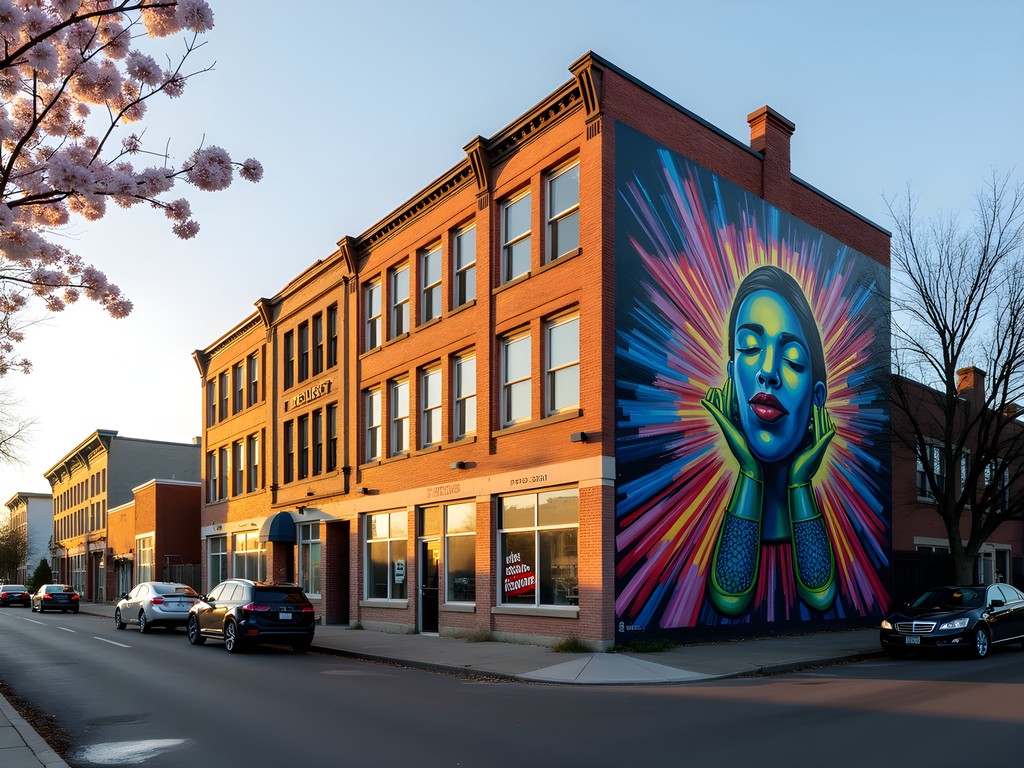
💡 Pro Tips
- Visit the Whiteaker neighborhood during golden hour when the warm light brings murals to life
- The 5th Street Market area offers excellent opportunities to capture the juxtaposition of historic and modern architecture
- Bring a lens cleaning cloth as spring showers can leave water spots that ruin urban photography
The Willamette River: Capturing Fluid Landscapes
The Willamette River serves as Eugene's liquid backbone, providing not only ecological significance but also extraordinary photographic opportunities. During spring, the river corridor bursts with life as migratory birds return and riparian vegetation flourishes in vibrant greens.
Alton Baker Park offers excellent access points to document the river's many moods. I found myself returning repeatedly to the footbridge connecting the park with the University of Oregon campus. From this vantage point, I could capture long-exposure shots of the flowing water against a backdrop of the city's skyline. For these extended exposures, my compact travel tripod proved essential, particularly during blue hour when the city lights begin reflecting on the water's surface.
For those interested in wildlife photography, the Delta Ponds area northeast of downtown offers remarkable opportunities. This 150-acre waterway complex has been restored to provide habitat for native species. During my visits, I documented great blue herons, osprey, river otters, and numerous waterfowl species. The interconnected pathways allow photographers to find secluded spots where wildlife becomes accustomed to human presence, enabling more intimate portraits.
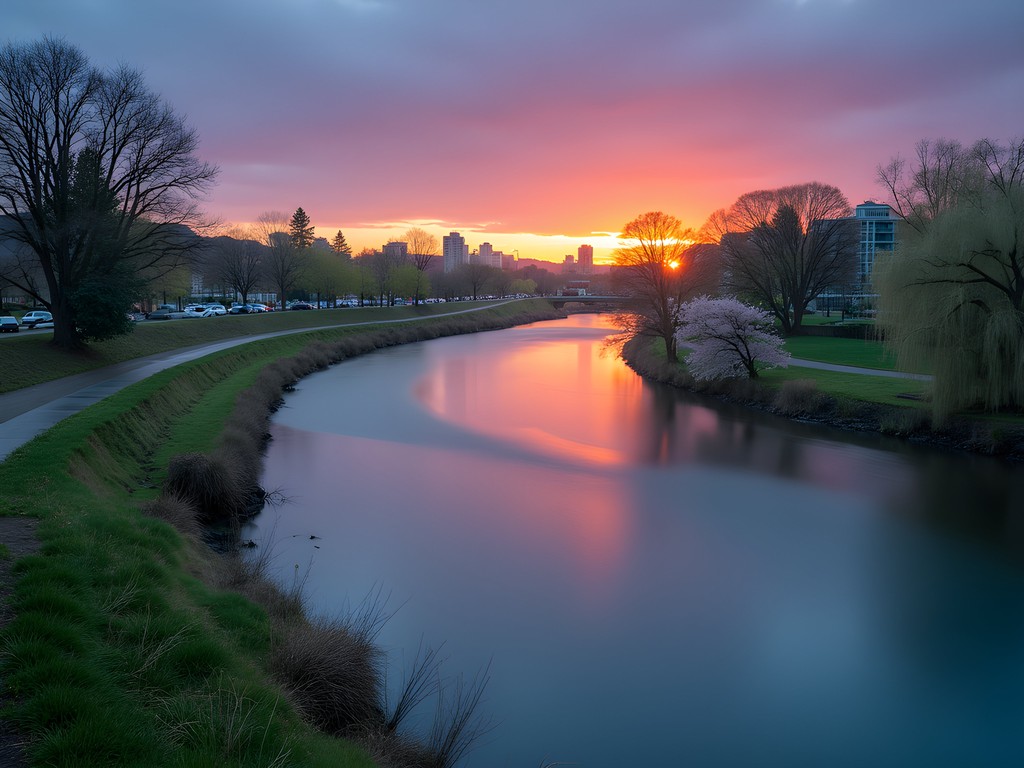
💡 Pro Tips
- Use a variable ND filter for long-exposure river shots, especially during bright spring days
- Visit Delta Ponds in early morning when wildlife activity peaks and light quality is optimal
- The Peter DeFazio Bridge offers excellent compositional opportunities with its distinctive architecture framing river scenes
University of Oregon: Architectural Harmony
The University of Oregon campus represents a fascinating study in how architectural design can harmonize with natural landscapes. As someone who studies ecosystem interactions, I found the campus's integration of buildings with green spaces particularly compelling from both ecological and photographic perspectives.
The Memorial Quad and Old Campus area showcase classical architecture framed by magnificent trees, some over a century old. Spring brings an explosion of cherry blossoms and magnolias that transform these formal spaces. For these shots, I often used my collapsible reflector to balance the harsh shadows that can occur when photographing white blossoms against architectural elements.
The modernist Matthew Knight Arena contrasts dramatically with the historic buildings, providing fascinating studies in architectural juxtaposition. I found the most compelling compositions by incorporating elements of both architectural styles within single frames, particularly during blue hour when artificial lighting creates dramatic effects.
My unexpected favorite photographic location was the university's Museum of Natural and Cultural History. Beyond housing fascinating exhibits, the building itself incorporates indigenous design elements that reference the region's original inhabitants. The exterior walls feature petroglyph-inspired artwork that photographs beautifully in raking light, connecting contemporary architecture to the area's deeper cultural history.
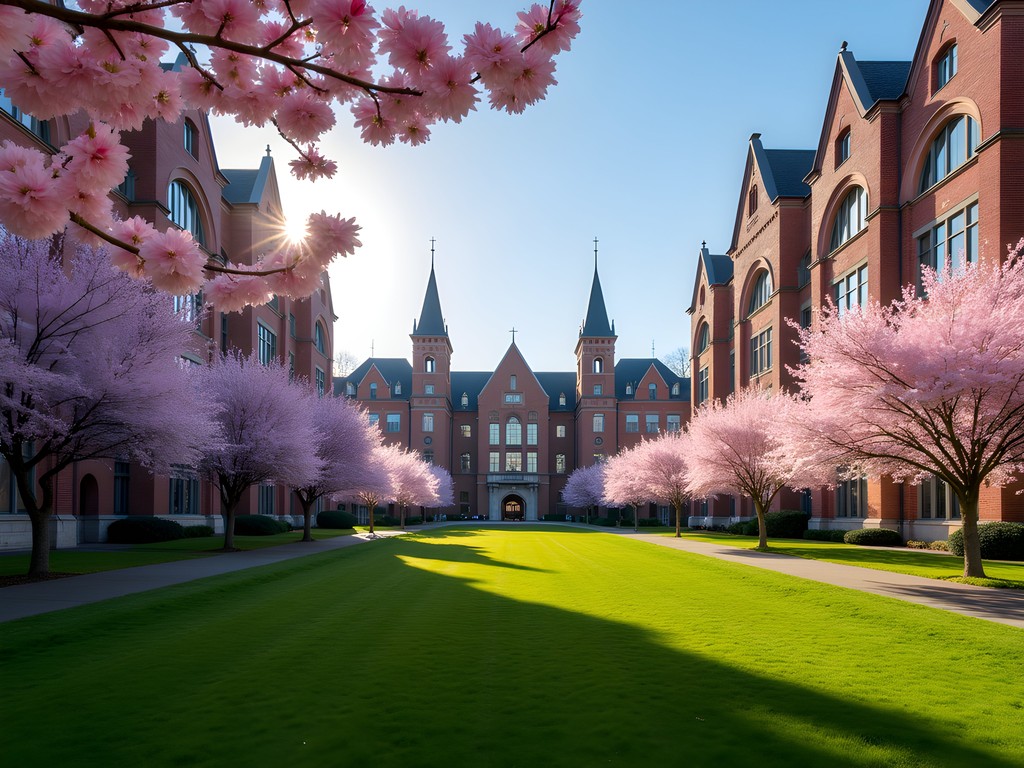
💡 Pro Tips
- Photograph the Memorial Quad early morning on weekends to avoid crowds
- Use a circular polarizer when capturing the reflective surfaces of modern campus buildings
- The view from the top floor of the Knight Library provides an excellent vantage point for campus landscape compositions
The Culinary Scene: Documenting Farm-to-Table Culture
Eugene's commitment to sustainable agriculture manifests in its vibrant food scene—a subject I found surprisingly rewarding to document photographically. The Saturday Market (actually held on both Saturday and Sunday during spring and summer) represents the epicenter of Eugene's local food culture and provides extraordinary opportunities for cultural photography.
The market's visual richness—from artfully arranged produce to the diverse community it attracts—offers endless compositional possibilities. I found myself repeatedly reaching for my prime lens to capture the vibrant colors and intimate moments between vendors and customers. The lens's wide aperture proved invaluable for creating shallow depth of field that isolated subjects against the busy market background.
Beyond the market, Eugene's farm-to-table restaurants provide opportunities to document culinary artistry. Establishments like Marché and Party Downtown transform local ingredients into visually stunning dishes. When photographing these culinary creations, I relied on my portable LED light to supplement the often-dim restaurant lighting without disturbing other diners.
For those interested in the agricultural origins of Eugene's food scene, I recommend photographing the urban farms within city limits. The Urban Farm at the University of Oregon and the Grass Roots Garden operated by Food for Lane County offer compelling visual stories about sustainable agriculture and community food systems.

💡 Pro Tips
- Visit the Saturday Market early to photograph vendors setting up their displays
- When photographing in restaurants, always ask permission from both staff and any patrons who might appear in your frames
- The Lane County Farmers Market offers excellent opportunities for produce photography with fewer crowds than the Saturday Market
Final Thoughts
Eugene defies simple categorization, much like the complex forest ecosystems I typically study. The city exists as an ecological and cultural ecotone—a transition zone where natural and human elements blend and create something entirely unique. For photographers, this presents extraordinary opportunities to document both the resilience of natural systems and the creative expressions of a community deeply connected to its environment.
What struck me most during my week in Eugene was how the city's artistic identity extends beyond galleries and museums into everyday life. From the carefully cultivated landscapes of the university campus to the spontaneous expressions of street art in the Whiteaker neighborhood, creativity permeates Eugene's identity. As climate scientists, we often discuss the concept of biophilia—humanity's innate connection to nature. Eugene demonstrates how this connection can manifest through artistic expression and community design.
I departed Eugene with memory cards full of images documenting this fascinating intersection of natural and cultural landscapes. For photographers seeking to capture environments where ecological awareness and creative expression coexist, Eugene offers a compelling and rewarding destination. I'll certainly return, perhaps in autumn when the deciduous trees along the Willamette transform the riverscape into gold.
✨ Key Takeaways
- Eugene offers exceptional diversity for photographers, from pristine natural landscapes to vibrant urban art scenes
- Spring provides optimal conditions for capturing both natural environments (wildflowers, rushing rivers) and cultural events (Saturday Market, campus life)
- The city's commitment to sustainability creates unique photographic narratives connecting people to place
- Early morning and golden hour provide the most favorable lighting conditions for both urban and natural subjects
📋 Practical Information
Best Time to Visit
Mid-April to early June for optimal spring conditions
Budget Estimate
$120-180 per day including accommodation, food, and transportation
Recommended Duration
5-7 days
Difficulty Level
Moderate

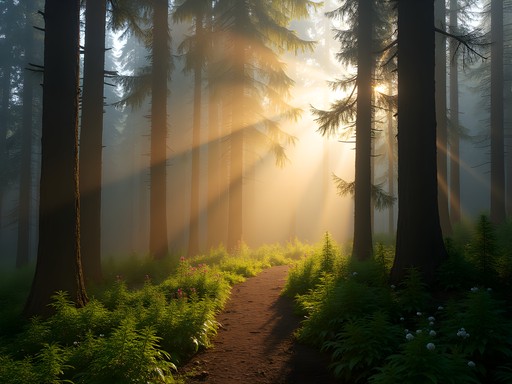

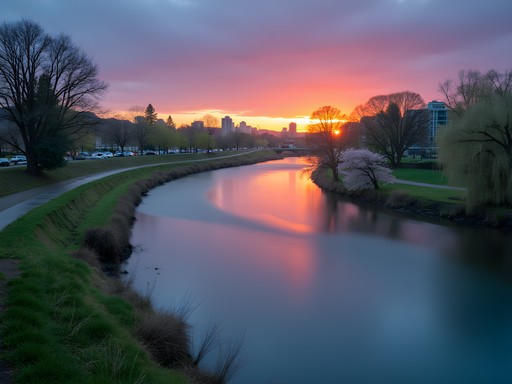
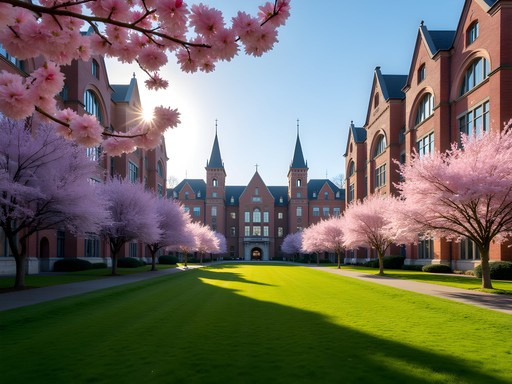





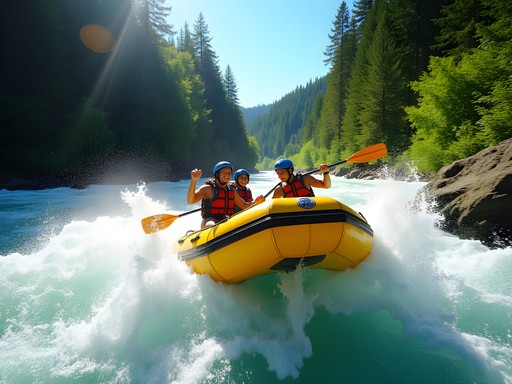
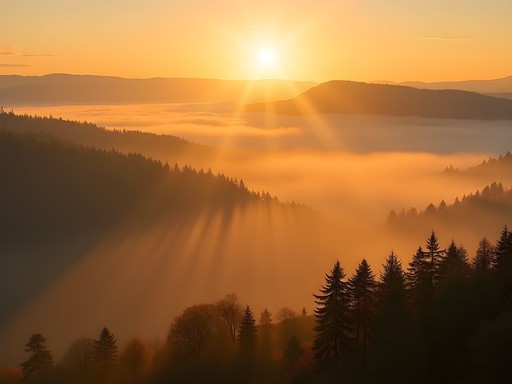
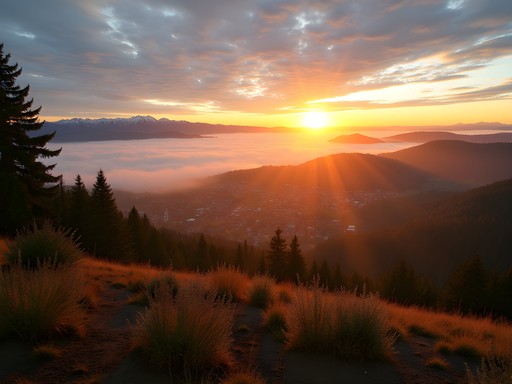



Comments
Olivia Sanchez
Connor, your perspective as a wildlife biologist really shines through in how you captured Eugene! I was there in April for an adventure photography workshop and completely fell in love with the Ruth Bascom Riverbank Path system. For anyone planning a visit, I highly recommend renting a bike to explore it - you'll find countless photography opportunities along the way. The morning fog rising off the river creates this ethereal atmosphere that's perfect for moody shots. I used my travel tripod for some long exposures at dawn that turned out amazing. The way you described Eugene as an 'ecological and cultural ecotone' is spot on - it's that beautiful transition zone that makes it so photographically rich.
redzone
Love the river shots! Is it easy to access those spots along the Willamette?
Sage Dixon
Connor, your perspective as a wildlife biologist brings such a fresh take on urban photography! I visited Eugene last fall and found the Hendricks Park rhododendron garden to be an absolute dream for photography - especially in the early morning when the fog rolls through. The way you captured the "ecological and cultural ecotone" is spot on. For anyone heading there, I'd add that the bike paths along the river offer some stunning vantage points that you can't get from the main roads. The University campus architecture against the fall foliage was definitely a highlight for my lens too!
Connor Gonzalez
Thanks Sage! I completely missed Hendricks Park - sounds like I need to plan a return trip. The bike paths were definitely a photographer's dream, especially with the morning mist rising off the river.
oceanwanderer
Hendricks Park is magical! The light filtering through the trees there creates the most beautiful natural spotlight effect.
blueninja
Heading to Eugene next month! Any spots that were particularly photogenic but maybe not as well known?
Connor Gonzalez
Check out the Owen Rose Garden at sunset - fewer tourists and amazing light. Also, the alleys behind Blair Boulevard have some hidden street art gems!
blueninja
Awesome, thanks for the tips! Adding those to my list.
roamone6298
Love the street art photos! Eugene seems so vibrant!
Savannah Wood
I visited Eugene last summer during my West Coast backpacking trip and was equally captivated by that intersection of nature and art you described. The Saturday Market was a highlight - so many local artists! I spent hours wandering between Skinner Butte Park and downtown, watching how the light changed the colors of the street murals throughout the day. Your photos really capture that special Eugene energy. Did you check out the Fifth Street Public Market? The artisanal shops there were incredible for photography.
globeseeker
Beautiful photos! I'm heading to Eugene next month and wondering what camera gear you'd recommend for capturing both the forest scenes and the urban art? I'm still pretty new to photography but want to make the most of my trip!
Connor Gonzalez
For Eugene specifically, I'd recommend a versatile zoom lens that can handle both landscapes and detail shots. I used my mirrorless setup with a 24-70mm for most shots, but also carried a wide angle for the forest canopy photos. The light changes quickly in the forest areas, so something that performs well in varied lighting conditions is key!
globeseeker
Thanks so much for the advice! I'll look into renting a better lens for the trip.
oceanwanderer
As someone who's photographed cities across the US, Eugene has a special quality to it! I spent a week there last summer and was blown away by how the urban areas blend so seamlessly with nature. The Willamette River at sunset is pure magic - those golden reflections on the water are incredible. Did you make it to the Saturday Market? The local artisans and their crafts make for some amazing portrait opportunities with really interesting backgrounds.
Connor Gonzalez
Thanks oceanwanderer! Yes, the Saturday Market was incredible - I actually have a whole separate folder of photos from there that I couldn't fit into this post. The light there in the morning is perfect for portraits.
bluephotographer19
Great post! What camera setup did you use for those amazing forest canopy shots? The light filtering through the trees looks incredible.
Connor Gonzalez
Thanks! I used my Sony Alpha a7 III with the 24-70mm f/2.8 lens for most of the forest shots. Early morning light in those Eugene forests is magical!
bluephotographer19
Nice! I've been thinking about upgrading. Those shots convinced me!
oregonlover
If anyone's planning a photo trip to Eugene, don't miss the murals along Blair Boulevard! They change frequently so there's always something new to capture.
citygal
Yes! I second this! The murals are incredible and the light in the late afternoon makes them pop.
Venture X
Premium card with 2X miles, $300 travel credit, Priority Pass